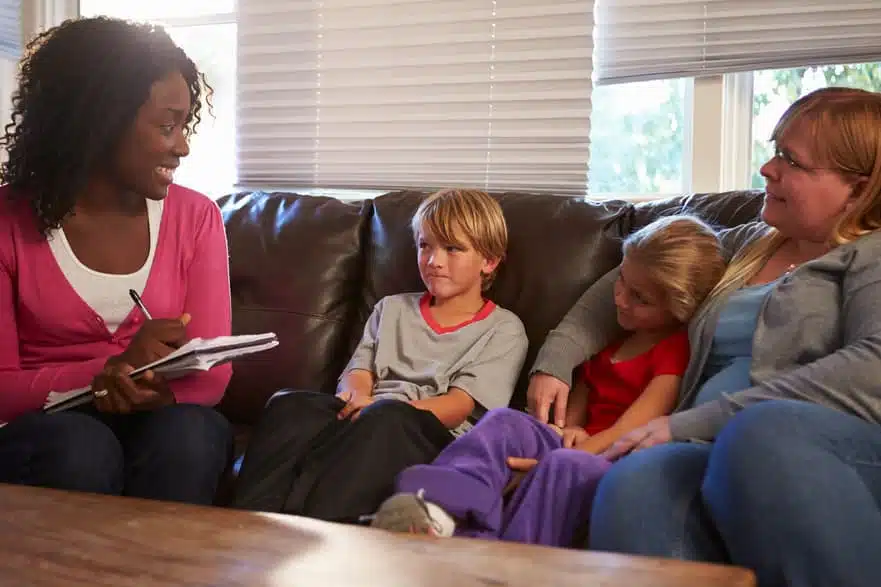Ofsted has urged a proper national audit of the needs of children in care.

In research into why do children go into children’s homes, Ofsted says that in order to understand sufficiency properly, there is a need to better understand the extent of the needs of children in care, and better understand the dynamics experienced by the children, their carers, local authority senior managers, social workers, commissioners and independent reviewing officers.
“The breadth of needs described here for our small group of children touches on other areas where our collective knowledge is poor. Although the DfE’s national collection of data on children in care captures some information, this is at a very high level and only captures one element of need,” said the report.
Ofsted highlights that not very much is known, particularly on a qualitative basis, about why children enter children’s homes. The inspectorate therefore carried out a study to find out how well matched children are to their homes and the extent to which their participation, views, wishes and feelings are considered in the decision-making process. Our study looks at a small group of children who have a very wide and diverse set of needs and who live in children’s homes that were visited by Ofsted inspectors in late 2019.
The study found:
- For one fifth of children, their current placement was their first experience of being in care
- Residential care was part of the intended care plan for just over half of the children
- One third of children had foster care as part of their original care plan
- Two thirds of the children entered a children’s home because of some form of interruption in their previous care: foster placement breakdown (41%), children’s home breakdown (15%) or family breakdown (12%)
- For almost four fifths of children, the move to a children’s home was planned meaning all the necessary preparations were made in advance
- The move to a children’s home was an emergency move for one fifth of the children; that is, events either at home or in another care placement meant that urgent action had to be taken that resulted in the child entering the children’s home
- Around three quarters of the children were judged – by the inspector and registered manager – to be well matched to the home.
The report highlighted that many aspects of children’s homes have been researched: how children’s homes function; children’s outcomes; the quality of care; why children go missing from children’s homes; the role of youth justice; the qualities of effective homes; children’s views of their own care; leadership and management; and, most recently, the workforce. Each of these studies touches on some aspects of children’s characteristics, and some feature a high-level view of children’s needs, but they rarely include the reasons why children went into children’s homes. This is possibly because of three commonly held views:
The first is that, compared with their peers in foster care, children in children’s homes have often had ‘by far the most troubled histories and a greater combination of adversities’.
The second is that children’s homes are where children with very complex needs go when either their family arrangements or their other care placements break down.
The third is that residential children’s homes are often, albeit wrongly, seen as a last resort or second best to foster homes. Perhaps, consequently, the reasons why children go into homes are often just assumed and not discussed at much length.
Most children in the study were in care in a children’s home for several reasons. Out of 111 children, residential care was the original plan for just over half. The vast majority of this group were older children: 49 were 14 or older.
Of the 59 children:
- 18 had experienced a family breakdown
- 18 had experienced sexual exploitation
- 16 had gone missing from previous placements necessitating residential care
- 11 had experienced mental health issues
- 10 had experienced a breakdown with foster carers
- 10 had experienced criminal exploitation
- 8 had experienced a children’s home breakdown
- 5 had experienced substance misuse
- 1 had experienced adoption breakdown
- 2 had a secure order (they had been in secure accommodation on welfare grounds)
The largest groups of children who went into residential care were those aged 14 and 15, respectively. Some children had been in long-term foster care or with family or kinship care and had reached a pivotal point in their teenage years that had resulted in a placement breakdown.
“The absence of early help for families of adolescents or the need for more intensive therapeutic mental health support combined with the developmental changes associated with that period in a child’s life are likely to be among further reasons for children entering residential care,” said the report.
The data for this group, where just under half were not originally going to go to a children’s home, corroborates the mindset that children’s homes are a last resort and fostering is the better care alternative. Yet, exploring the possible impact of professionals’ own negative views of children’s homes, a child and adolescent counsellor wrote in 2019:
“There are many reasons why a good quality children’s home may be a better option than a foster home for some children in care. Perhaps living with a substitute family is simply too painful – too stark a reminder of what they have lost or never had – or perhaps a child might feel that if they attach or bond with another family, they will be betraying their own. It could also be [that] a child’s early experience of a family home was frightening and abusive – so they just do not feel safe in that environment.”
Of the 52 children whose original plan was not residential care, 31 entered a children’s home because their foster care placement had broken down. Most of this group 28 had 3 or more previous fostering breakdowns.
Alongside the rise in the number of children in care, the Association of Directors of Children’s Services has documented that there has been a change in the last few years of the profile of children in care. Children have more complex difficulties, including serious physical and mental health problems, as well as developmental problems.
For the vast majority of the children, the move to the children’s home was planned. For a small minority, it was unplanned. And for a slightly larger group, it was an emergency move, in response to a breakdown of either a previous care placement or in family life.
The evidence from this group of children is that, even though just under half of them were originally supposed to go to destinations other than children’s homes, around three quarters were thought to be well matched to the home. This demonstrates the flexibility of many homes to adapt to children’s needs.
“We plan to publish more on the diversity of needs that children’s homes try to meet, and, separately, something on how far children travel to those homes. These are important elements in the discussion about how to ensure that there is sufficient provision,” the report concluded.
Research and analysis


